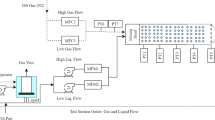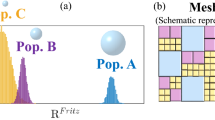Abstract
THE following behaviour of some striæ in the positive column of an electrical discharge through rarefied hydrogen seems to be of sufficient interest to warrant a description. The distances between adjacent striæ in hydrogen change with gas pressure in an anomalous manner first noted by Willows (Proc. Camb. Phil. Soc., 10, 302; 1900), in that, with reduction of pressure, they at first increase in magnitude, pass through a maximum value and then in turn through a minimum value. This minimum occurred at about 1.5 mm. pressure in the discharge tubes I used, which had an internal diameter of 11 mm. The striæ here were bluish in colour, whereas at the other pressures their colour was reddish. The phenomenon to be described was only observed in this narrow pressure region where the striæ were most closely packed. The discharge current was kept constant at 6 milliamperes and it passed between cold electrodes consisting of aluminium cylinders 2 mm. in diameter.
This is a preview of subscription content, access via your institution
Access options
Subscribe to this journal
Receive 51 print issues and online access
$199.00 per year
only $3.90 per issue
Buy this article
- Purchase on Springer Link
- Instant access to full article PDF
Prices may be subject to local taxes which are calculated during checkout
Similar content being viewed by others
Author information
Authors and Affiliations
Rights and permissions
About this article
Cite this article
ZELENY, J. A Singular Behaviour of Striæ in the Positive Column of an Electrical Discharge through Hydrogen. Nature 125, 562–563 (1930). https://doi.org/10.1038/125562b0
Issue Date:
DOI: https://doi.org/10.1038/125562b0
Comments
By submitting a comment you agree to abide by our Terms and Community Guidelines. If you find something abusive or that does not comply with our terms or guidelines please flag it as inappropriate.



